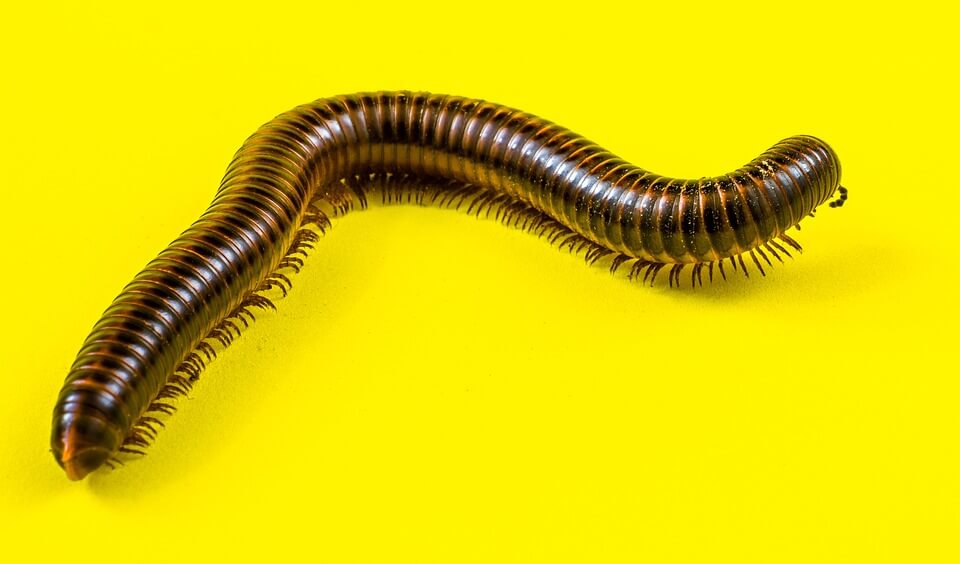What is Arthropoda? What are the features and characteristics, types of Arthropoda? Information about Arthropoda.

Source: pixabay.com
Arthropoda; a phylum of the animal kingdom. It embraces a vast array of small animals including crabs, crayfish, insects, mites, spiders, centipedes, thousand-legged worms, and their relations. It far outnumbers all other known phyla in species and individuals, and only the phylum Chordata, which encompasses man and the other vertebrates, ranks higher on the zoological scale.
The name Arthropoda means “joint-footed,” and this feature along with the segmented body structure and the chitinized outer skin are distinctive characteristics of the phylum. In the standard scheme of classification, the arthropods are divided into five classes: the Crustacea, Insecta, Arachnida, Chilopoda, and Diplopoda. Another class, the Onychophora, is sometimes included in this grouping, though it has certain wormlike features that set it apart from other arthropods.
Crustaceans are chiefly aquatic animals, living in both fresh and salt water. The members have a hard outer skeleton consisting of a cephalothorax (head and chest regions united) and abdomen. There are usually two pairs of antennae, and a single pair of legs for each segment. The most familiar examples are crabs, crayfish, lobsters, shrimps, and barnacles.
Insects are usually terrestrial, but some species inhabit fresh water, and many adult insects have a remarkable flying capacity. A defining feature of insects is the division of the body in its adult stage into head, thorax, and abdomen. There are three pairs of legs (hence the alternate name of Hexapoda to describe the class). Insects can be winged or wingless, and they can go through a simple or complex metamorphosis. Insects are by far the most numerous class of animals: An estimated 6,000,000 species exist, of which some 700,000 are known to science. The class includes cockroaches, crickets, earwigs, termites, lice, bugs, bees, beetles, wasps, butterflies, dragonflies, May flies, fleas, and grasshoppers. Grasshoppers are often cited as typical insects in their structure and habits.
The arachnids are mainly terrestrial, and have segmented bodies consisting of head, thorax, and abdomen; they do not have antennae or wings. They usually have four pairs of legs, though in rare species two or three pairs may be found. The class includes mites, spiders, ticks, and scorpions. The horseshoe or king crab, often referred to as a “living fossil” because it belongs to an otherwise extinct order, is also commonly placed with the arachnids.
The class Chilopoda are terrestrial, wormlike animals whose anatomy consists of a head and many body segments, with one pair of legs attached to each segment. They are chiefly carnivorous, and undergo a simple metamorphosis. The common household centipede is the chief representative of the class. The nearest relatives of the Chilopoda are the diplopods. These are also terrestrial wormlike creatures, with elongated, many-segmented bodies. There may be one or two pairs of legs to each segment, as in the thousand-legged worm. Unlike the chilopods, they are chiefly vegetarian, and have a pair of short antennae.
In general, arthropods grow by a molting process: shedding their skins or shells as a new skin develops beneath the old. The cast-off skins, or exuviae, are often evident in colonies of leaf hoppers, aphids, and other arthropods.
All arthropods are comparatively small. The largest living crabs have a leg spread of 12 feet and the largest moths have a wing spread of 10 1/2 inches, whereas the smallest species are scarcely visible to the naked eye.
Certain arthropods, especially the crustaceans, have long been a source of food for man. The catching, preserving, and distributing of crabs, lobsters, and shrimps constitute an important and highly developed food industry. Laws have been enacted to protect them from being exterrrfinated, and means taken to increase their numbers.
Insects are not only the largest class of animals by number; they also present the most difficult problems for the human race. Some insects are beneficial to man, but the majority are not, and these cause incalculable damage through their biting, stinging, carrying of disease, and destruction of crops. Their small size, almost unlimited reproductive capacities, and adaptability to every type of climatic conditions create a constant challenge to man’s ingenuity in his war against them.
The phenomenon called parthenogenesis, or reproduction without the fertilization of the female, sometimes occurs among the arthropods, especially in the insect class. A common example is to be found in the aphids or plant lice, which reproduce in tremendous numbers. In some species, males are unknown. In certain cases, only females are produced from the unfertilized eggs for long periods, until a generation evolves that resumes the sexual cycle. Among honeybees, the unfertilized eggs produce only male offspring.
Another phenomenon of the insect world is the condition of polymorphism, in which adults of two or more distinct forms of the same sex are designated as castes, each caste having a definite and specialized function within the insect colony. This phenomenon reaches its peak among such social insects as termites, ants, and bees.
mavi